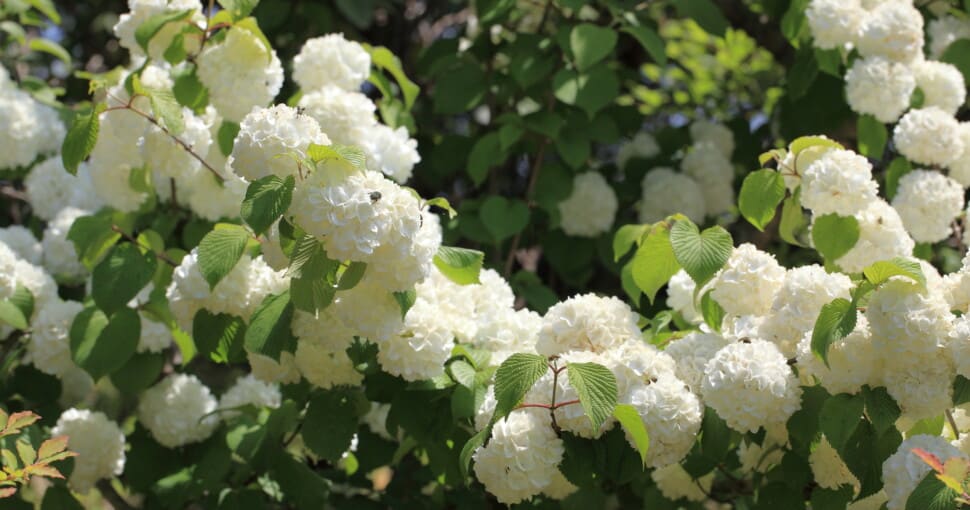The Japanese snowball bush (Viburnum plicatum) is native to Taiwan, Korea, China, and Japan. These plants belong to the Adoxaceae plant family and provide a year-round bright and colorful display. The shrub or small tree has dark green leaves with a coarsely serrated texture. The shrub is transformed in warmer months by masses of white flowers. Bunches of berry-like fruit follow these phases. In the fall, the snowball bush provides a bright red display of leaves.
Contents
The Japanese snowball bush is a hybrid variety of Viburnum f. tomentosum, also called the wild snowball bush. This means the Japanese snowball bush is sterile and does not produce fruit. The blooms differ slightly because the Japanese snowball bush does not produce fertile flowers.
Both varieties of snowball bush grow between eight and fifteen feet tall and almost as wide. The branches grow horizontally from the main stem to form a dense shrub. Flowers are formed on the top side all along these horizontal branches. This creates the impression of snow settling on each branch of the bush.
The most popular varieties of snowball bushes have white flowers, but there are also varieties with pink flowers. A well-looked-after snowball bush will last up to twenty years, so ensure there is enough room to grow and keep it well-composted to ensure many beautiful flowers.
What if snowball bush will not grow in your area? A few types of shrubs look similar, so do not fret. Here are some plants and flowers that look like snowball bushes.
1. Bridal Wreath Spirea
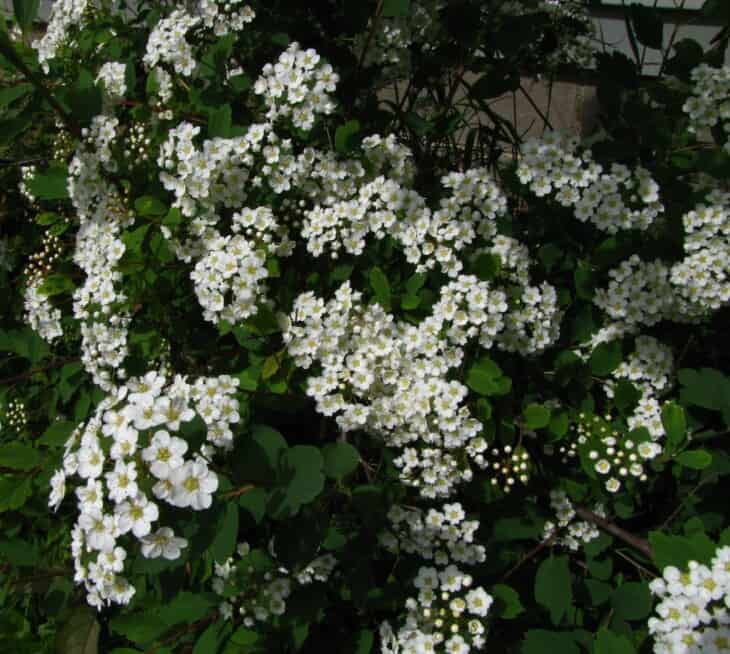
The bridal wreath spirea (Spiraea prunifolia) are fast-growing shrubs in the Rosaceae plant family. Bridal wreath spirea is a white-flowered variety of spirea, but there are a hundred species to choose from. Flowers of a wide variety of other spirea varieties are pink or mauve. Like snowball bush, the bridal wreath spirea is deciduous. For the remaining three seasons of the year, these shrubs put on a show in the garden.
Spirea also goes by names like meadowsweet and steeplebush and are native to Asia and temperate regions of the Northern hemisphere. Shrub size may vary between four and six feet high and almost six feet wide. Like the snowball bush, the bridal wreath spirea branches spread horizontally and arch downward. The dense shrub presents clusters of flowers along each branch before the leaves.
The bridal wreath spirea has lush green to blue-green leaves, but some varieties have chartreuse or yellow leaves. As the seasons grow cooler, spirea leaves change to put on a fall show of yellow, orange, and red. Once the plants have gone dormant, it is time to prune the spirea to ensure beautiful new growth in spring. Spirea can grow two feet or more in a season, so pruning is required each season.
2. Butterfly Bush
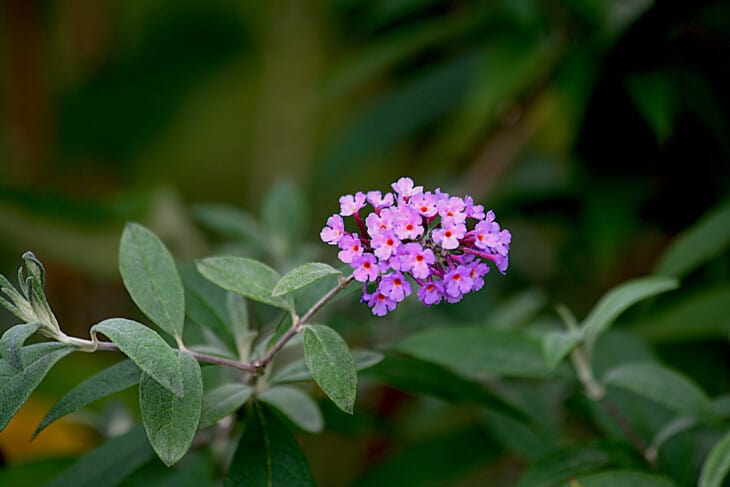
The butterfly bush (Buddleja) is also called sagewood, mountain sage, or by its botanical name, Buddleja. Butterfly bush plants are part of the Scrophulariaceae, or figwort plant family. These fragrant plants are endemic to Africa, Asia, and the Americas. There are more than one hundred and forty species in the Buddleja genus, with flowers that range in color from white and yellow and orange to pink and mauve.
The butterfly bush that resembles the snowball bush most is the white profusion variety. Butterfly bushes have long arching branches with lance-shaped grey-green leaves with silvery undersides. The long flower spikes are borne on the tips of the branches and can grow eight inches long. Butterfly bushes flower from mid-summer into fall, attracting plenty of seasonal pollinators.
While these sweet-scented flowers attract hummingbirds, butterflies, and bees, they are rabbit and deer resistant. You can expect your butterfly bush to grow to six feet, but it can also be pruned into a hedge. Don’t throw away all the leaves. They can be used to make an aromatic herbal tea and can be used to relieve coughs.
3. Snowflake Candytuft
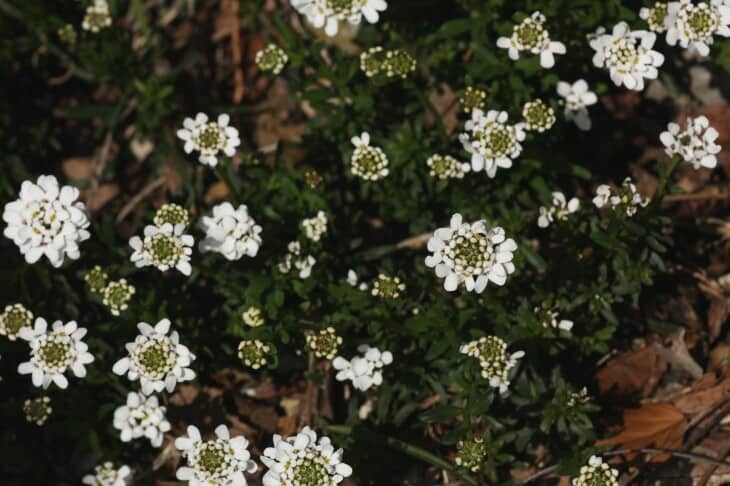
If shrubs like the snowball bush are too large for your garden, but you would like a similar plant, then snowflake Candytuft (Iberis sempervirens ‘Snowflake’) may be the answer. You may also find that they are called evergreen candytuft or perennial candytuft. These members of the Brassicaceae family are native to Iberia but have become naturalized parts of Europe, The United Kingdom, Africa, and America.
Snowflake Candytuft bushes are low-growing, evergreen shrubs. They form dense tufts around twelve inches tall and can spread twenty-four inches wide. The shrubs are covered in white, fragrant flowers from spring through summer. Snowflake Candytuft plants are hardy and can withstand dry conditions.
If you live in a region too cold for a snowball bush, then snowflake Candytuft shrubs are ideal. The flowers look very similar, and the snowflake candytuft can withstand cold weather and remain green. In fact, the snowflake candytuft bush requires a period of cold weather with temperatures below 40°F in order to flower well. These little snowflakes can tolerate temperatures as low as -10°F.
4. Common Lilac
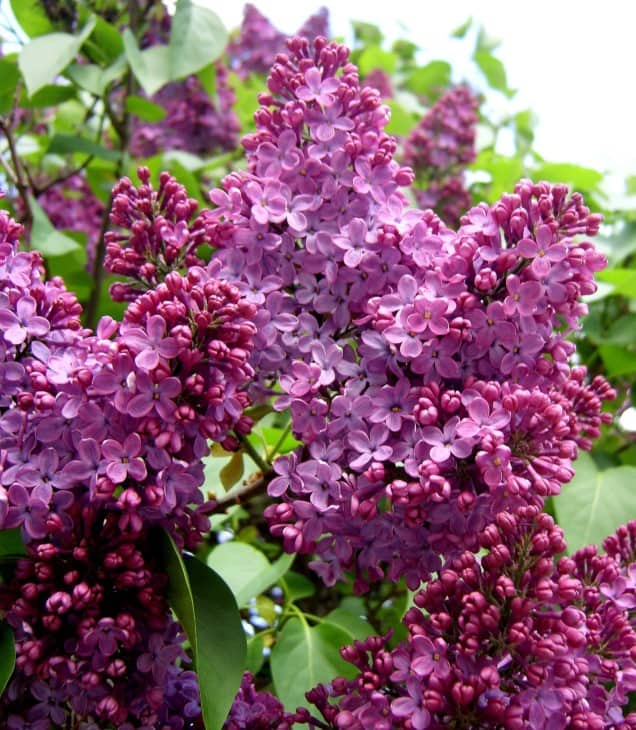
The common lilac bush (Syringa vulgaris) may also be called English lilac, pipe privet, or French lilac. Common lilac is native to Southeastern Europe and is now naturalized throughout Europe, North America, and Asia. Common lilac is an excellent alternative to the snowball bush, as there are varieties that are much smaller than a snowball tree. Or you could grow both of these beautiful plants.
Common lilac has a wide selection of varieties with different growth sizes. Some lilac varieties grow as deciduous shrubs, while others can grow into small trees around twenty-six feet tall and the same width. Lilacs are long-lived like snowball bushes, living as long as twenty years.
Lilac flowers are beautiful, but the fragrance alone is a good reason to plant this shrub. The flowers are arranged in clusters, like little bunches of grapes. The colors range from white to all shades of purple and almost blue.
Related: 23 Beautiful Types of Lilac Trees | Are Lilacs Poisonous?
5. Snowball Hydrangea
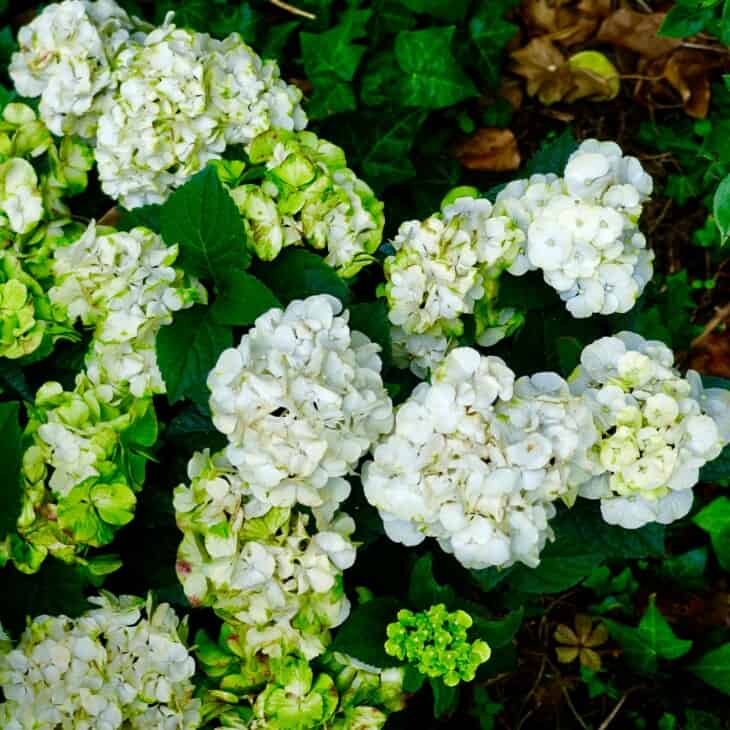
The snowball hydrangea (Hydrangea arborescens), also called Annabelle hydrangea, hortensia, or smooth hydrangea belongs to the Hydrangeaceae family. The snowball hydrangea is native to America and Asia but can be found in gardens around the globe today. Snowball hydrangeas are so similar to snowball plants that they are often mistaken or misidentified.
Snowball hydrangeas are an excellent option for your garden if you live in a more temperate region for snowball plants. Hydrangea plants are also smaller, so if your garden is small and the snowball plant is too big for the space you have, they are a good option. The large snowball hydrangea flower clusters cover the bush, creating the impression that the shrub is covered in snow.
Snowball hydrangeas grow roughly three to five feet tall but have a huge visual impact when in bloom. The individual flowers are not very big, but the flower umbels can be ten inches across. As is the case with snowball plants, there are varieties of hydrangeas with blooms that are pink or purple. Hydrangeas bloom for roughly four months, providing a long display season.
Related: 8 Plants That Look Like Hydrangea
6. Persian Shallot
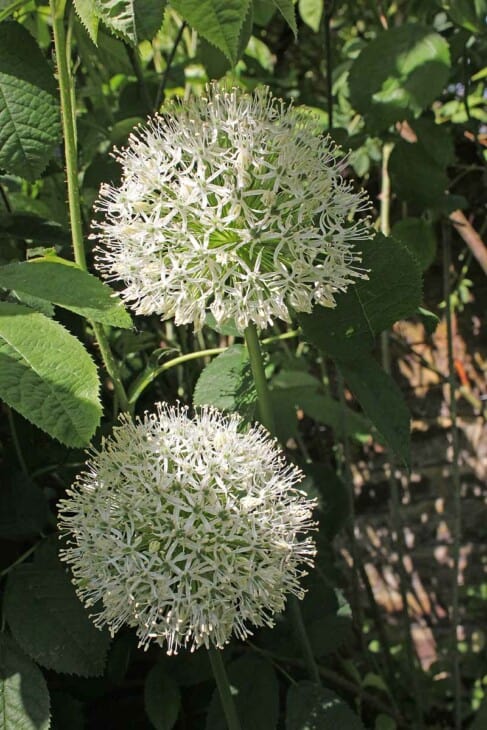
The Persian shallot (Allium stipitatum) does not grow as a shrub in the way that snowball plants do. If your garden lacks space to grow a shrub, Persian shallots provide beautiful big white flowers without taking up a lot of space.
Persian shallots grow from bulbs that are one to two inches big. The leaves are flatter and broader than regular onions and are green-grey. Flowers are produced as a full, round umbel on a tall flower stem. Flower stems are as tall as sixty inches, and flower umbels can grow almost five inches in diameter. By the time the flowers bloom, the leaves have died back.
Persian shallots attract pollinators like butterflies and bees to the garden. Even though they grow as wildflowers in their native countries, Turkey, Iraq, and Iran, Persian shallots are a popular food source. In addition, Persian shallots are used medicinally to treat tuberculosis. It also has anti-fungal, anti-tumor, and anti-bacterial properties.

